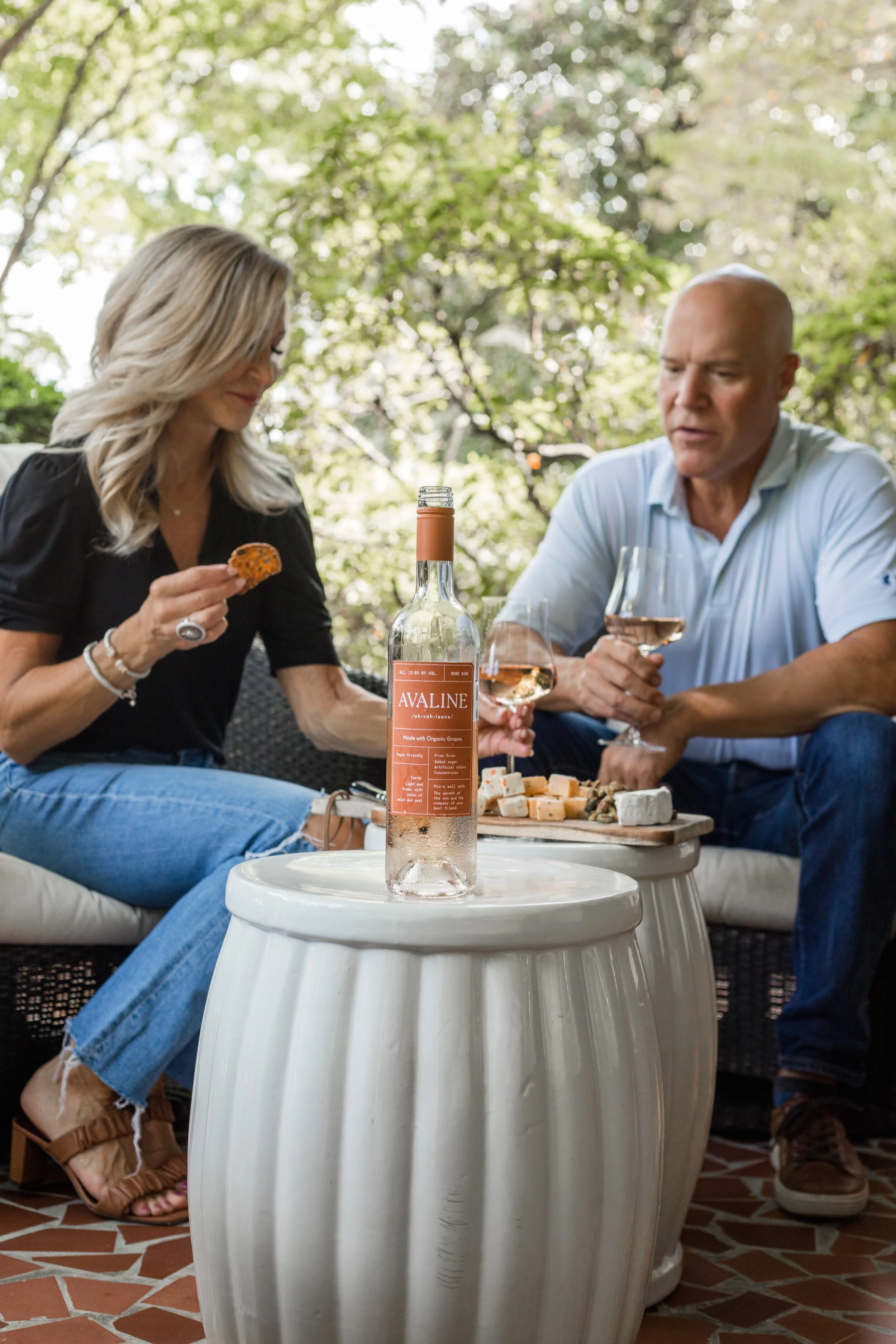What Exactly Is Natural Wine?
In 2020 actress Cameron Diaz teamed up with Katherine Power to launch their clean wine brand, Avaline.
Avaline makes clean, delicious wine with organic grapes. It’s vegan friendly, free of unnecessary extras and full of natural goodness. Keep reading to learn more about natural wines.
Did you know that winemakers are legally required to disclose very little about their wines. Those disclosures only reveal information such as growing and bottling locations, whether the wine contains added sulfites, and the percentage of alcohol. There is no obligation for winemakers to tell you about how their grapes are grown or to name any of the more than 70 additives that are used in the wine making process to alter the taste, color, and mouth feel of what is in your glass.
“PEOPLE THINK THAT NATURAL WINE IS A FAD OR A NEW THING, BUT IT’S THE TRADITIONAL WAY TO MAKE WINE. IT’S CONVENTIONAL WINE THAT’S ACTUALLY NEW.”
What is natural wine?
Natural wine is s wine made from unadulterated fermented grape juice and nothing else.
Understanding natural wine requires a basic understanding of the winemaking process. That process has two parts: growing and picking grapes, and then turning them into wine through fermentation. Natural wine, then, is made from grapes not sprayed with pesticides or herbicides. Natural winemakers handpick their grapes instead of relying on machines to harvest them. When it comes to turning those handpicked grapes into juice, natural winemakers rely on naturally occurring yeast that’s in the air and will land on grapes if you put them in a vat for long enough to set off natural fermentation. Unlike most conventional winemakers, they don’t use any additives (like fake oak flavor, sugar, acid, egg white, etc.) in the winemaking process.
Occasionally, some natural winemakers will add some sulfite. Sulfites are a preservative and stabilizer that winemakers have been using longer than any other additive and are also naturally occurring. Sulfites ensure that the wine you drink tastes roughly the same as it did when it went into the bottle. There are two types of sulfites…natural and added. Natural sulfites are natural compounds produced during fermentation. Sulfite-free wines do not exist. It is literally impossible. Sulfites are also a preservative, but the fermentation process doesn’t produce enough sulfites to create the expensive cellar wines that wine connoisseurs love to collect. Without added sulfites, a bottle of wine wouldn’t be able to sit for 50 years. Added sulfites preserve freshness and protect wine from oxidation, and unwanted bacteria and yeasts. Without added sulfites, a 1961 Bordeaux would not be worth drinking.
Natural winemakers either use no added sulfites or use it in small quantities, while conventional winemakers use up to 10 times as much. They also use it differently…conventional winemakers add sulfites to grapes to kill off natural yeasts, and then add more throughout the rest of the winemaking process while natural winemakers will add a little bit just before bottling. The purest of the pure — naturally fermented grape juice with no added sulfites — is often called “zero-zero,” referring to the lack of added anything.
The presence of sulfites doesn’t disqualify a bottle from the natural wine category, though. Small amounts of sulfites — around 10 to 35 parts per million are generally considered an acceptable amount of preservative to add in the bottling stage. Conventional wine, on the other hand, often uses much higher amounts of sulfites, which some natural wine supporters think changes the flavor of the finished product.
Are Sulfites Bad For You?
Sulfites aren’t generally bad for you. In spite of the “CONTAINS SULFITES” warning that is printed on most wine labels, sulfites are not harmful, although that is exactly what lobbyists would want you to believe. Starting in the 1970s, anti-alcohol lobbyists were trying to pass legislation that would require wines to list their ingredients. After those efforts continuously failed, a 1987 law required any wine with 10 PPM (parts per million) or more sulfites to be labeled with “contains sulfites.” However, this has nothing to do with actual health risks and was entirely meant to scare people away from drinking wine. If it was really about health, the “contains sulfites” campaign would also have target products such as dried fruit, which have around 3500 PPM, compared to wine, which averages around 80 PPM and by law cannot exceed 350 PPM.
Did you know that children’s fruit leather has more sulfites than wine as do the french you eat at lunch?! Everything from pickles to pizza crust to painkillers contain sulfites. The reason sulfites became such a big deal is because in the 1980s there was a rise in sulfur allergic reactions due to the large amount of sulfur used in preservatives. It’s kind of like if suddenly everything had a ton of peanuts in it without any warning, and then a bunch of kids with nut allergies ended up in the hospital. It makes sense that you would want companies to disclose that peanuts are in their products, but that doesn’t mean you, a non-peanut-allergic-person, need to spend the rest of your life terrified. - Adapted from an article in Bon Appetite
Why Drink Natural Wine?
So, the real reason to drink natural wine is because there are more than 60 approved additives that American winemakers can use to manipulate their wines without listing them on the label…such as - sugars, added yeasts, gelatin and worse. And as I said above, no one is required to tell you about the additives. A lot of wine is a grape product, plus all these millions of additives to create a product that is reliably the same every year. Natural wine is s wine made from unadulterated fermented grape juice and nothing else.
The best advice to follow is to shop at a local wine store and ask for low-intervention wines. These wines use as few chemicals as possible, tend to go natural for sugars and yeasts, and have little or no added sulfites.
These are the reasons I love to drink Avaline wines. The flavor is amazing, it’s better for the planet and healthier for you. So…make a delicious cheese board, open a bottle of Avaline wine and enjoy!
Be sure to check out the Avaline website to learn more about their wines!







